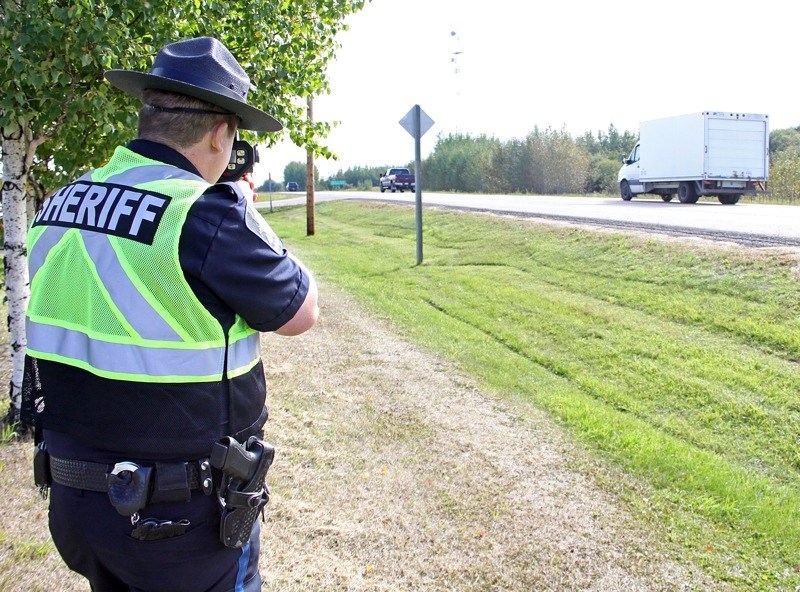Alberta in spring can mean many things to different people.
For drivers, that translates into clear roads, which for police forces around the province means toning down those that have a need to speed.
April is Speed Enforcement month for RCMP and Sheriffs, including the Athabasca/Boyle Integrated Traffic Unit (ITU).
“Obeying the posted speed limit on the highway saves lives every day,” said ITU Sgt. Sonny Kim.
“That limit is set according to what the road is designed to handle and for perfect road conditions.
“The faster you drive, the longer it takes to react and slow down.”
For Kim, it’s all about people getting to their destination safely, especially on the highways in this area.
“The biggest contributor to collisions on Highway 63 is speed and distracted driving,” he said.
“And with all of the large trucks and big loads, speeding can decrease a driver’s field of vision and reaction time. It’s amazing how going from 100 kilometres per hour to 130 changes things like stopping distance greatly.”
Kim noted a majority of drivers need a reminder that all of the major highways – 2, 55 and 63 – are set with a 100 km/h limit, not 110, and all county roads are 80 km/h unless otherwise stated.
Drivers should also remember they must slow down to 60 km/h when passing any emergency vehicle with it lights flashing – that includes tow trucks – or when going through construction zones.
“If a driver fails to do so, the fine can be double,” added Kim.
And while excessive speeding has been on a bit of a decline since 2007, there remains far too many tickets being handed out.
Kim stated, on average, his unit – which has RCMP and Sheriffs officers covering a vast area of northeastern Alberta – dishes out between 1,200 and 1,500 tickets every month.
Speeding can also cause drivers problems in other ways, as every ticket will earn them demerits on their license: two demerits for going up to 15 km over the limit, three for up to 30. Drivers get four demerits for up to 50 and six for anything above 50 over.



